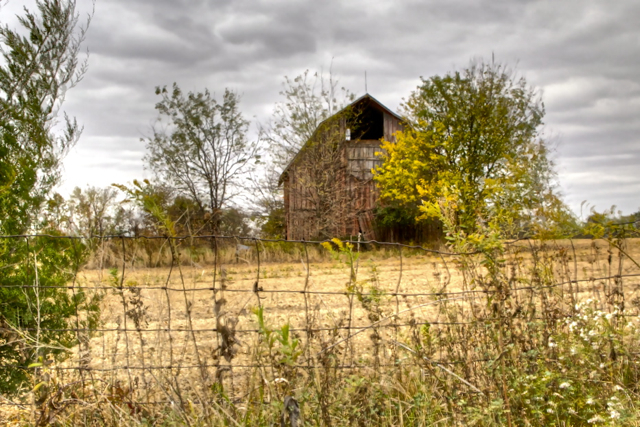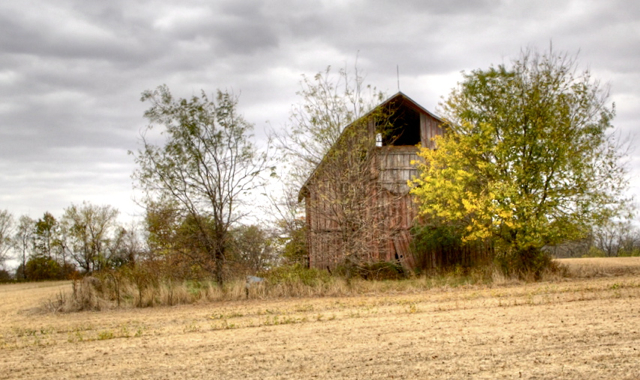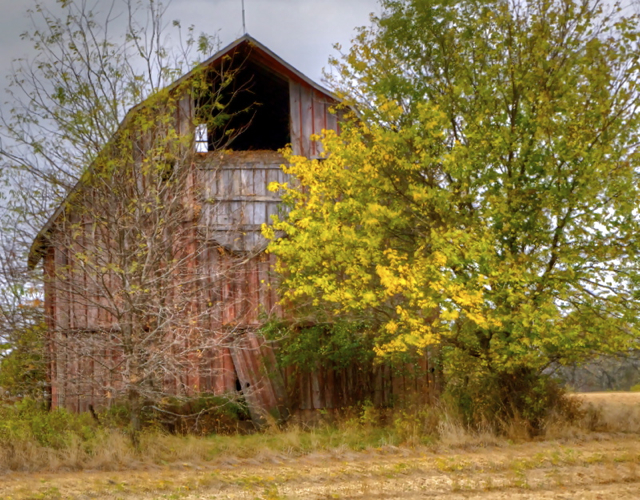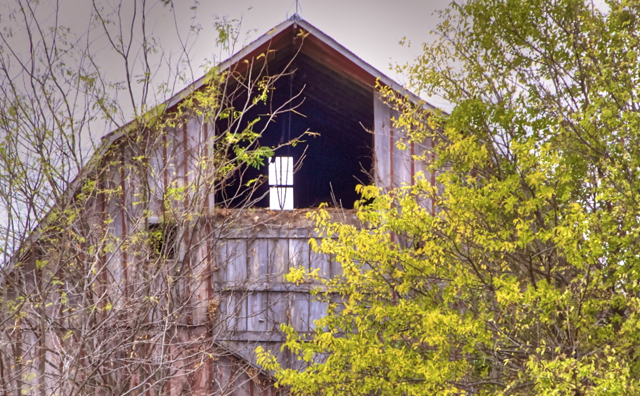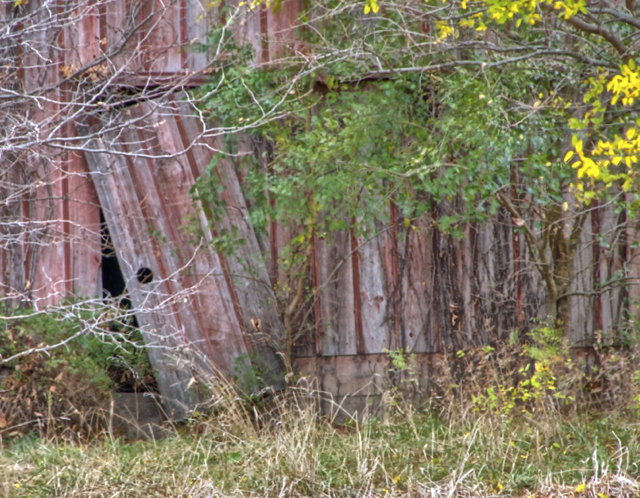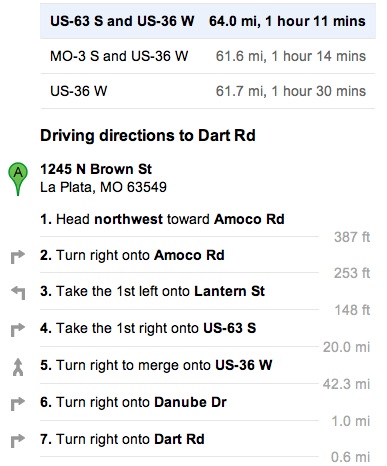Locust Creek Covered Bridge
Photos by Carl@TrainWeb.com

Except for a small sign on Hwy. 36, this is the first sign you'll see after you turn off Hwy. 36 onto Danube Dr.

Sign at the parking lot for the Covered Bridge.
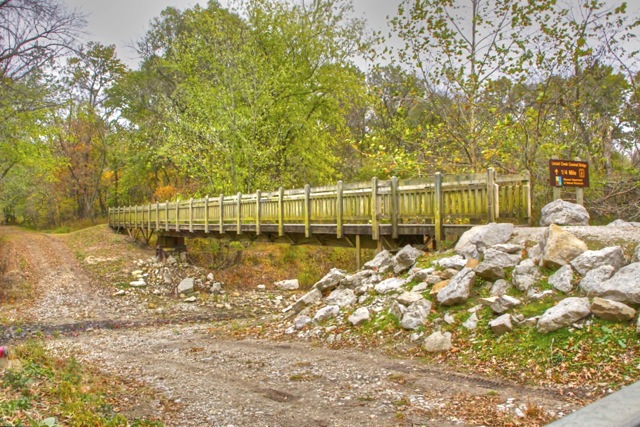
The bridge you will cross to enter the island on which the bridge is located. It is less than a 1/2 mile walk.
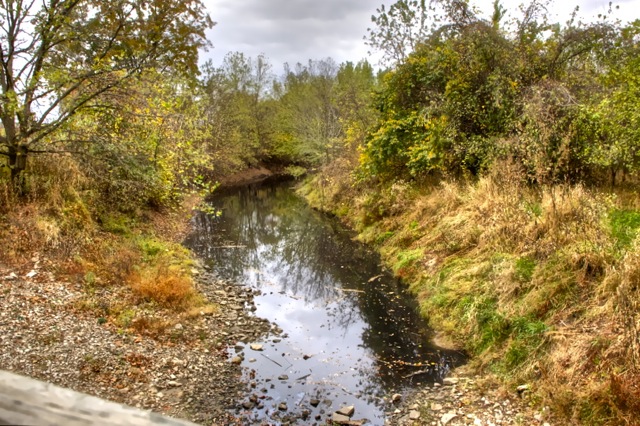
View from the pedestrian bridge.

The West entrance, the first sight of the beautifully restored 1868 bridge. It no longer crosses water.
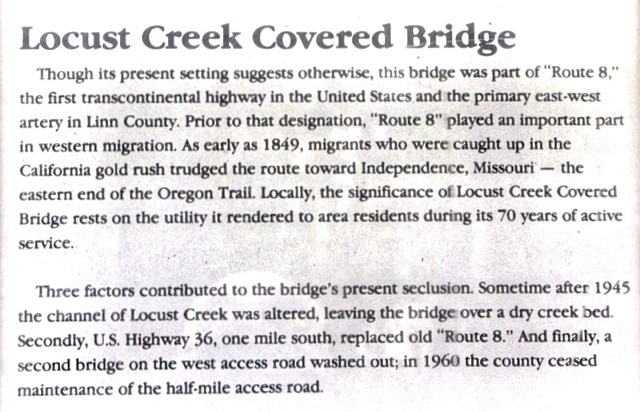
An informational sign on site.
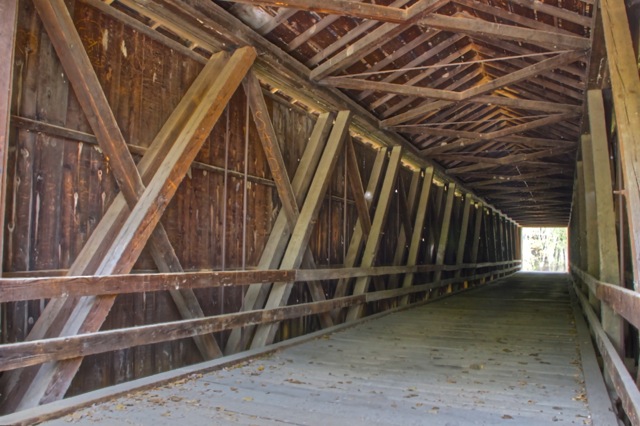
I stepped inside, set up my tripod, and tried to capture the intricate
patterns and skillful construction of the Howe-truss system bridge using bridge bolts and
beams.
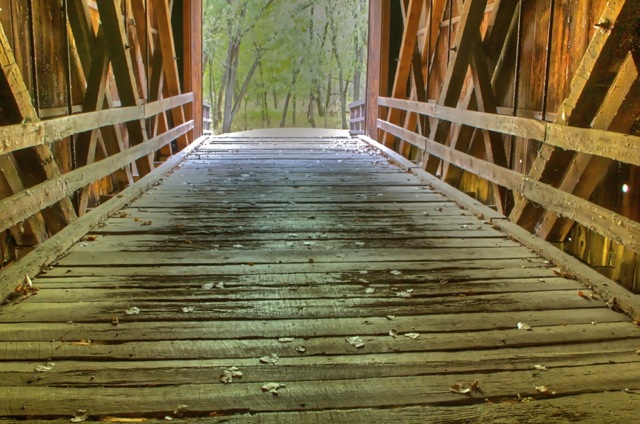
View out the east end of the bridge. The foliage outside tinted the flooring of the bridge green.
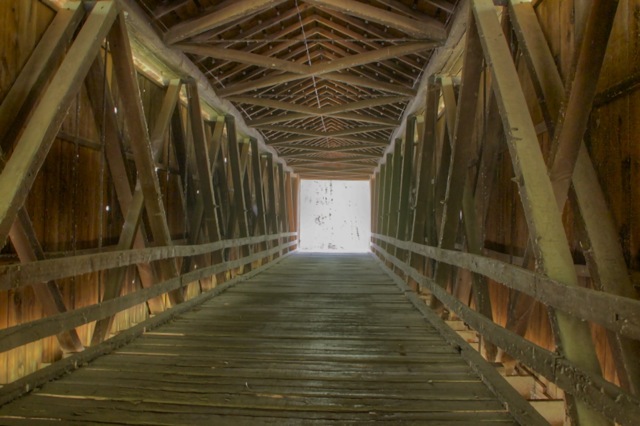
I liked the way the light, coming from below the bridge, illuminated
the inside of the siding from the bottom, looking like indirect
lighting in modern days.
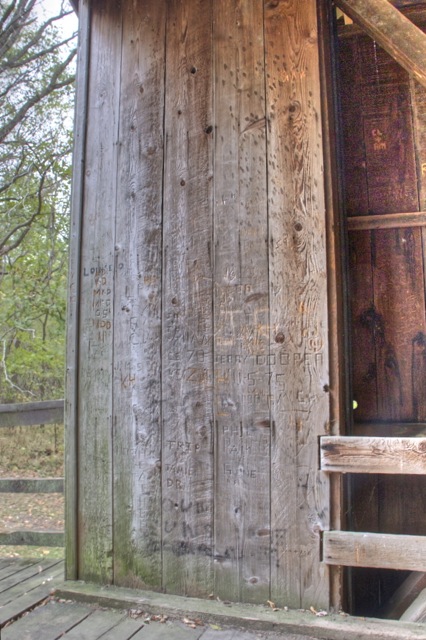
For years these entry boards have provided a young boy with a pocket
knife an opportunity to publicly declare his love for his girl.
As he and the girl grew older, and they drove through the bridge in a
horse and buggy, they learned why covered bridges were called "Kissing
Bridges"
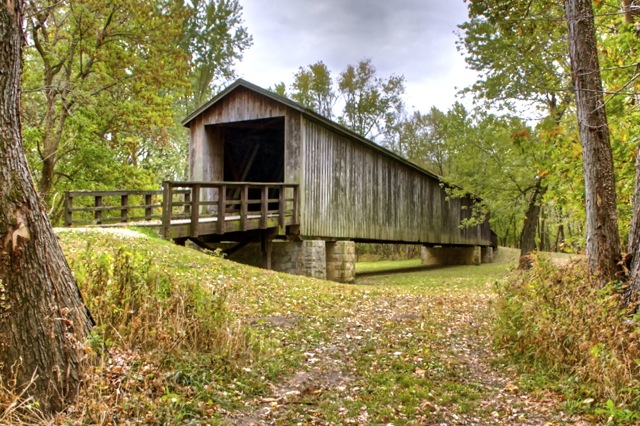
Outside the east entrance to the bridge, I found some mature trees to
use as a frame for a photo. The vehicle tracks in the leaves
seemed to lead my eye toward the bridge.
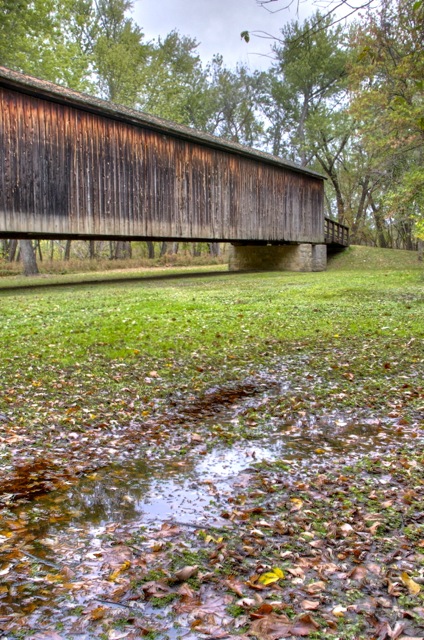
The only water I found in the dry creek bed was in this low spot, but I
could not get a good reflection of the bridge in the pool.
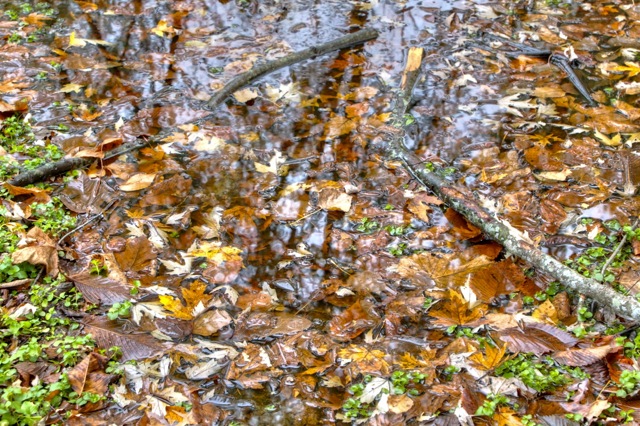
The pool did show Mother Nature's way of creating good, rich, soil for raising good stands of corn and soybeans.
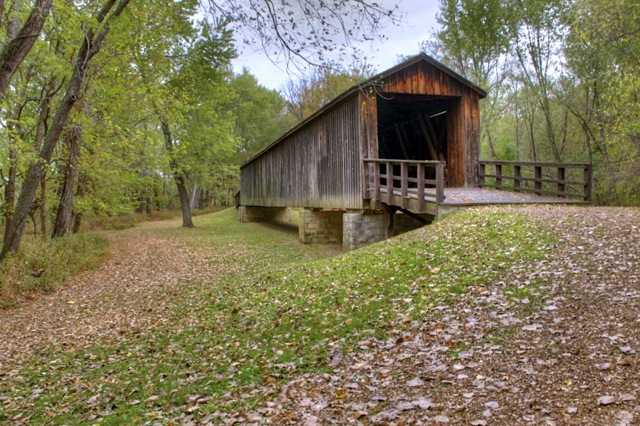
Heading back to my car, I just had to take one more shot of this silent sentinel in the woods.
The only sounds, while I was here, were the russle of the leaves in the
treetops and my footsteps as I walked through the bridge. One's
imagination might create the rhythmic sound of a horse and buggy crossing the
bridge, the sounds of rippling water passing underneath, or the sounds
of a 'barn dance' and 'pitch in supper' which were occasionally held
here back in the day.
The Barn on Locust Creek
Covered Bridges and Barns have always
been a favorite photographic subject of mine having been born, not in a barn, but on
a farm where we put up hay and milked cows in our barn. Also,
there were 3 covered bridges in my home county in Southern Indiana, so these two
photographic subjects have been favorites for years.
On this day, I was delighted as I headed down the
gravel road to the Locust Creek Covered Bridge, because I noticed an
old barn that I would be able to photograph when I returned from the
covered bridge to the 'hard road.'














